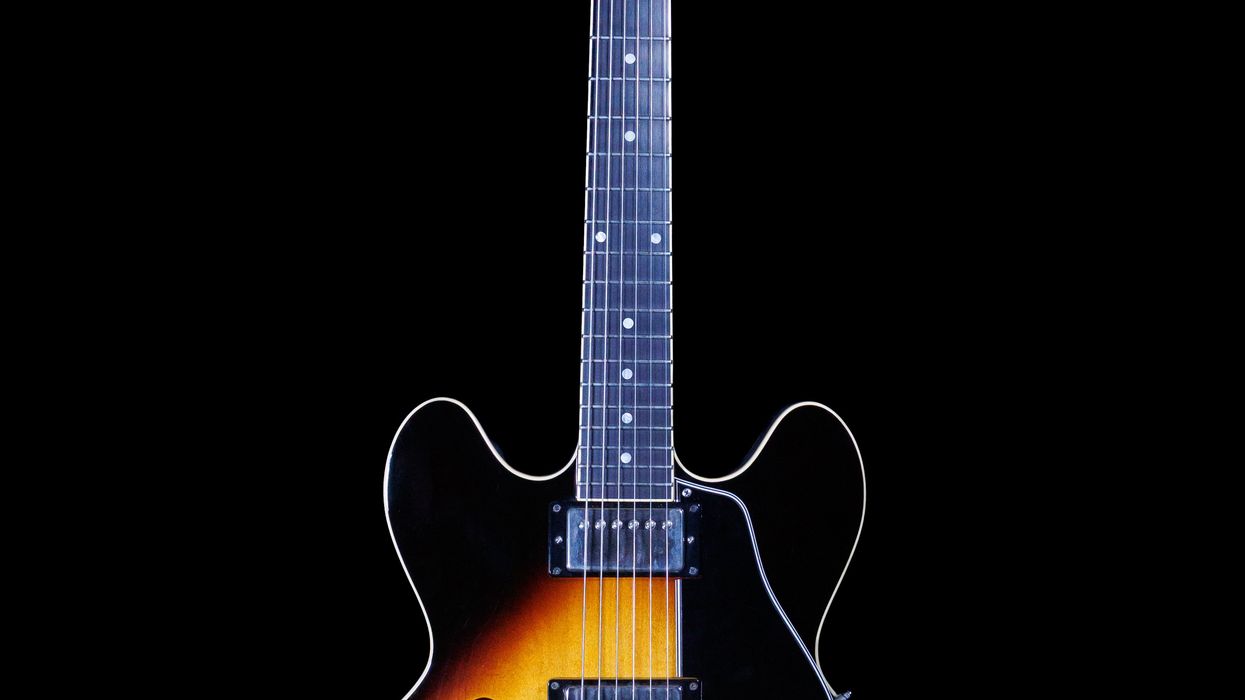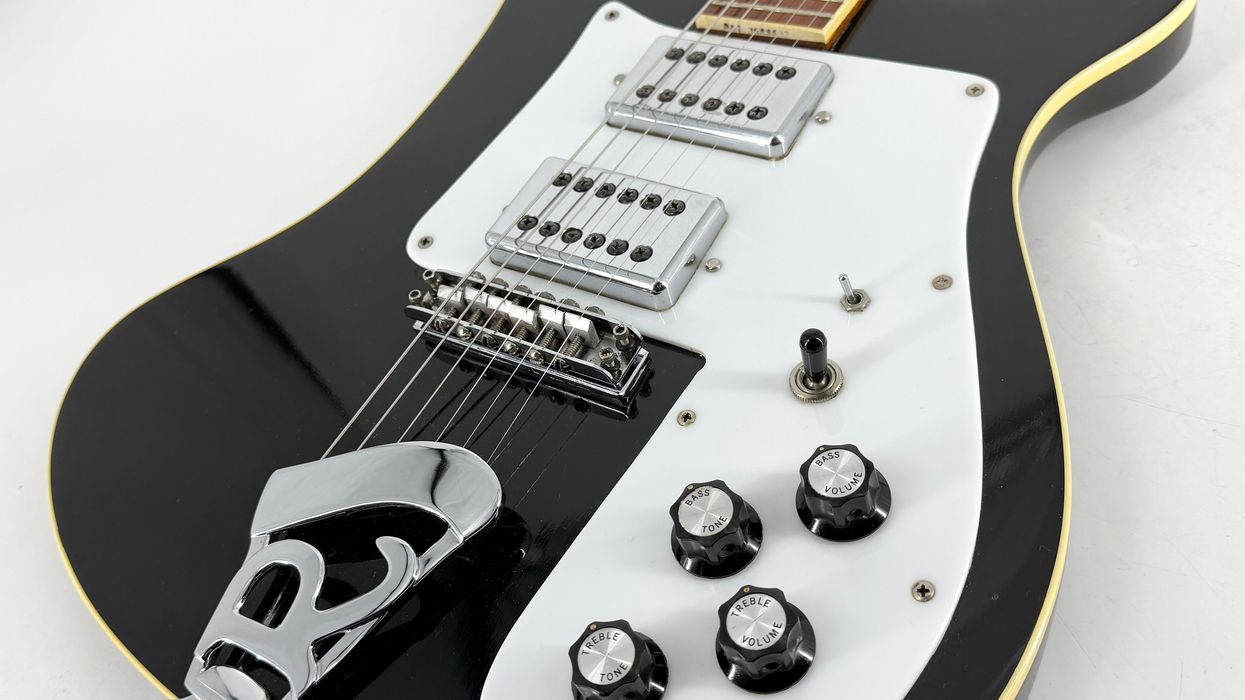There’s an oft-told tale about solidbody guitars in the early 1950s. It relates how California upstart Fender sparked the public’s fervor with its Broadcaster and Telecaster models, and how the established East Coast builders first denied that they had to respond, but then relented. The rest, and even that alone, is history.
While everyone knows how Gibson answered Fender, they weren’t the only notable East Coast brand at the time. Epiphone was a heavy hitter, too, and there were other significant labels, including the company behind this month’s guitar, New York City-based Premier. That guitar and amp seller was a division of the Peter Sorkin Music Company, and its guitars were made by Sorkin’s manufacturing subsidiary, Multivox. Premier was especially notable for its “scroll” electrics, like this month’s exceptionally well-preserved E-723.
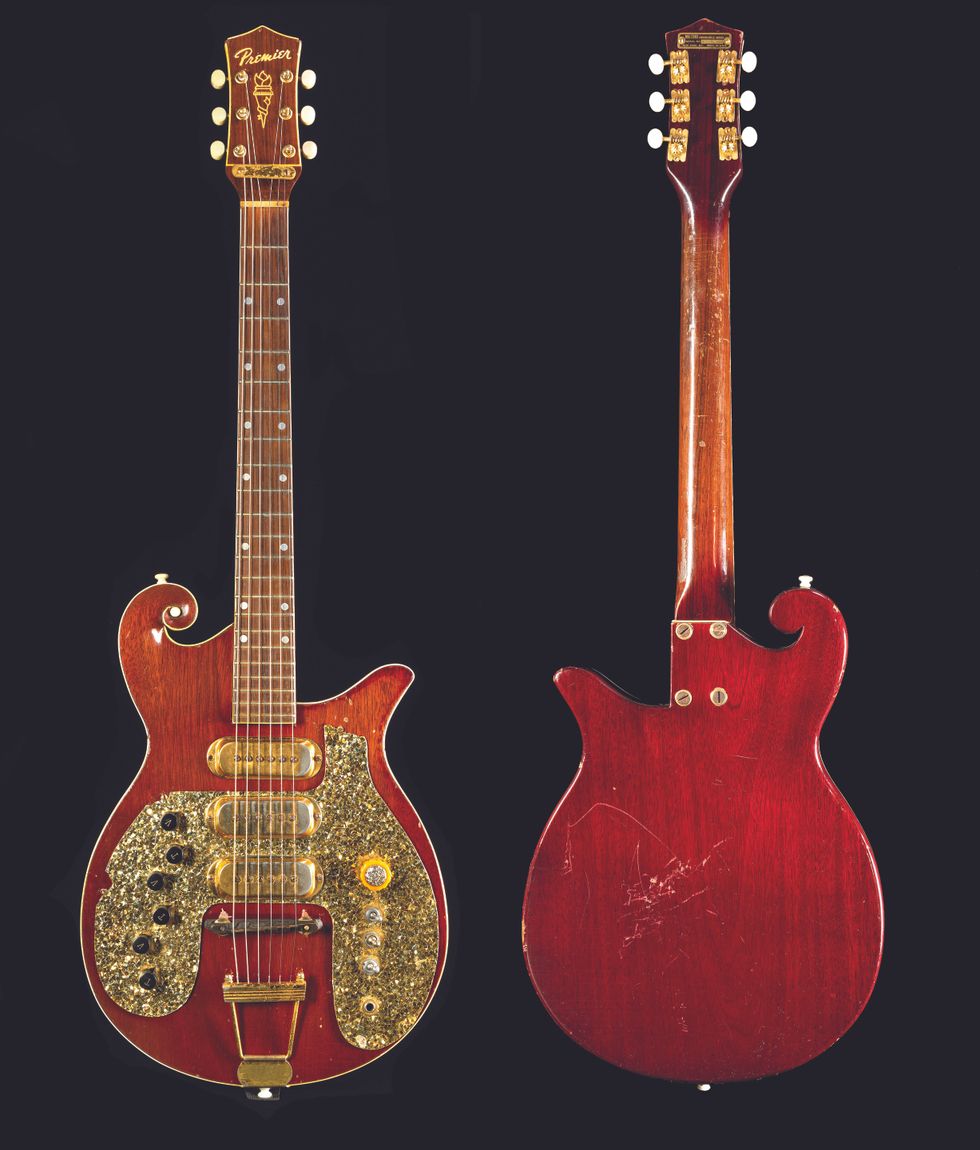
This guitar’s belt rash proves it’s seen action during its more than half-century.
Photo by Lynn Wheelwright
With pots dated late 1958, this E-723 was originally offered in or around 1959 and is an early example of the scroll shape that Premier would continue to use throughout the 1960s. Check out that distinctive upper horn: traditional yet daring, almost like a mandolin’s curves transferred to one solid piece of mahogany. And, well, that’s exactly what it is.
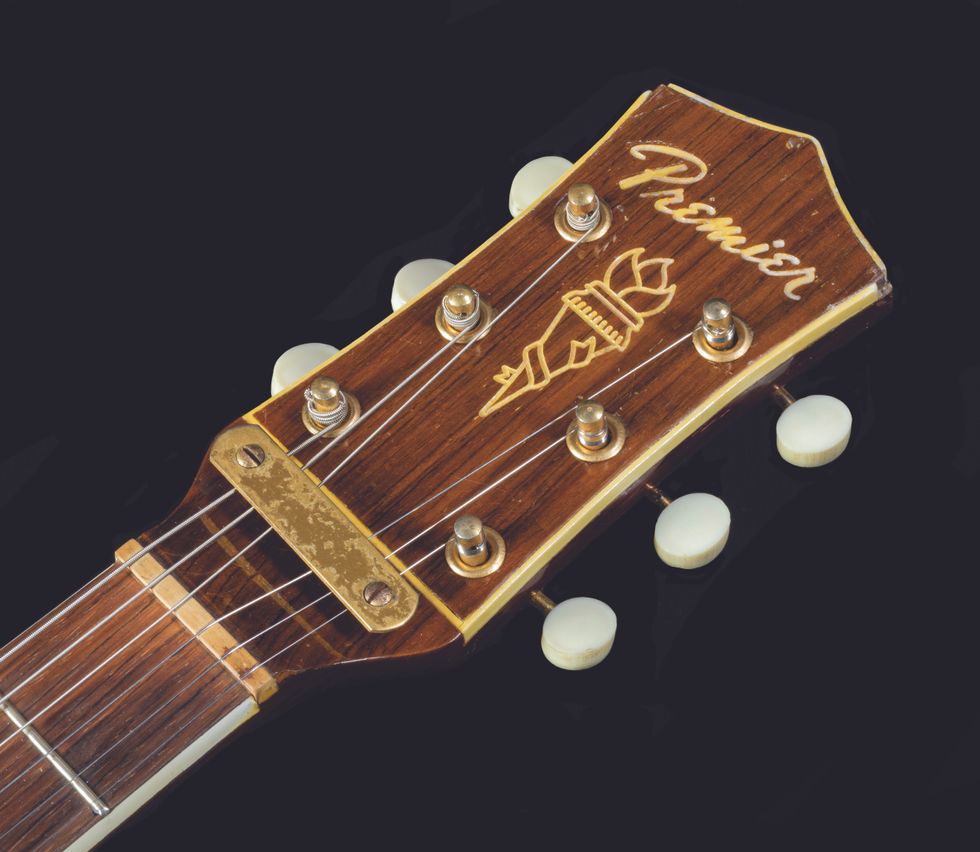
Like Gibson’s urn headstocks, this Premier’s torch inset has a distinctly Greco-Roman look.
Photo by Lynn Wheelwright
Premier’s owner Sorkin had recently bought the Strad-O-Lin mandolin company, and he put its equipment to work on these solidbodies. In many ways, they’re a marriage of old-world craftsmanship and rock ’n’ roll design. The neck is one carved piece of Brazilian rosewood, yet bolt-on. The gold hardware and trapeze bridge could complement any jazz box, yet they sit next to a large crushed-plastic pickguard that’s almost garish. All those knobs and switches are functional and funky. The small black knobs include a volume and tone control for each of the three single-coil pickups, which get their own on/off toggles as well. The large gold dial is a master volume control.
Premier’s owner Sorkin had recently bought the Strad-O-Lin mandolin company, and he put its equipment to work on these solidbodies.
Premier’s scroll guitars were made in a variety of pickup configurations, model names, and finishes, and were originally sold for anywhere from $145.50 to $230.00 and more, depending on the number of pickups and factory upgrades. Nowadays, prices range from about $1,500 at the low end (for a single-pickup model in fair condition) to $5,000 or more.
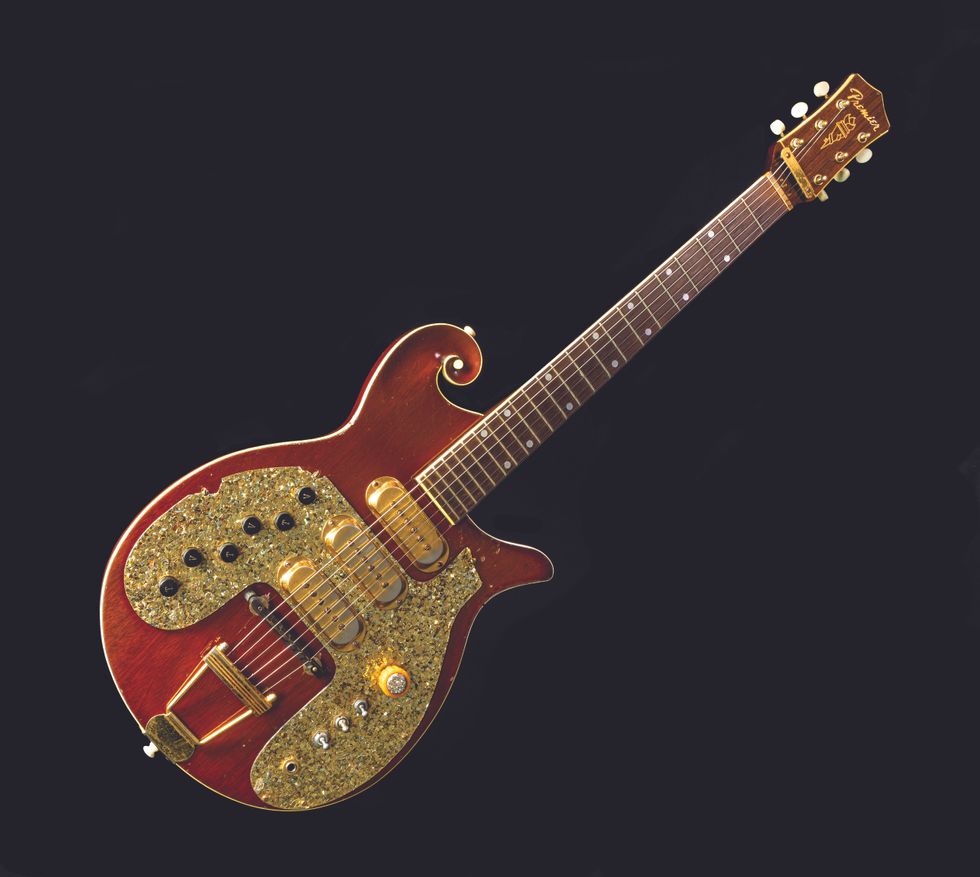
The dials on the left side of the guitar are volume and tone controls for the pickups. The toggles at right are on/off switches, and the large dial is a master volume.
Photo by Lynn Wheelwright
This particular Premier is one of the high-end models, with three pickups and a Ruby finish that has faded over time. Guitar seller, tech, builder, historian, and writer Lynn Wheelwright has owned it for the last 30 years and says it is one of “only two other examples of this top-of-the-line, solid-carved, 3-pickup beauty” he’s found in decades of looking for guitars. He’s selling it for $4,899 through his Pro Musician Outlet Reverb shop.
Sources for this column include Vintage Guitar’s February 2020 article “Boulevard of Broken Dreams: The Premier E-723” and Reverb listings from Retrofret Vintage Guitars, The Guitar Broker, and Rivington Guitars.


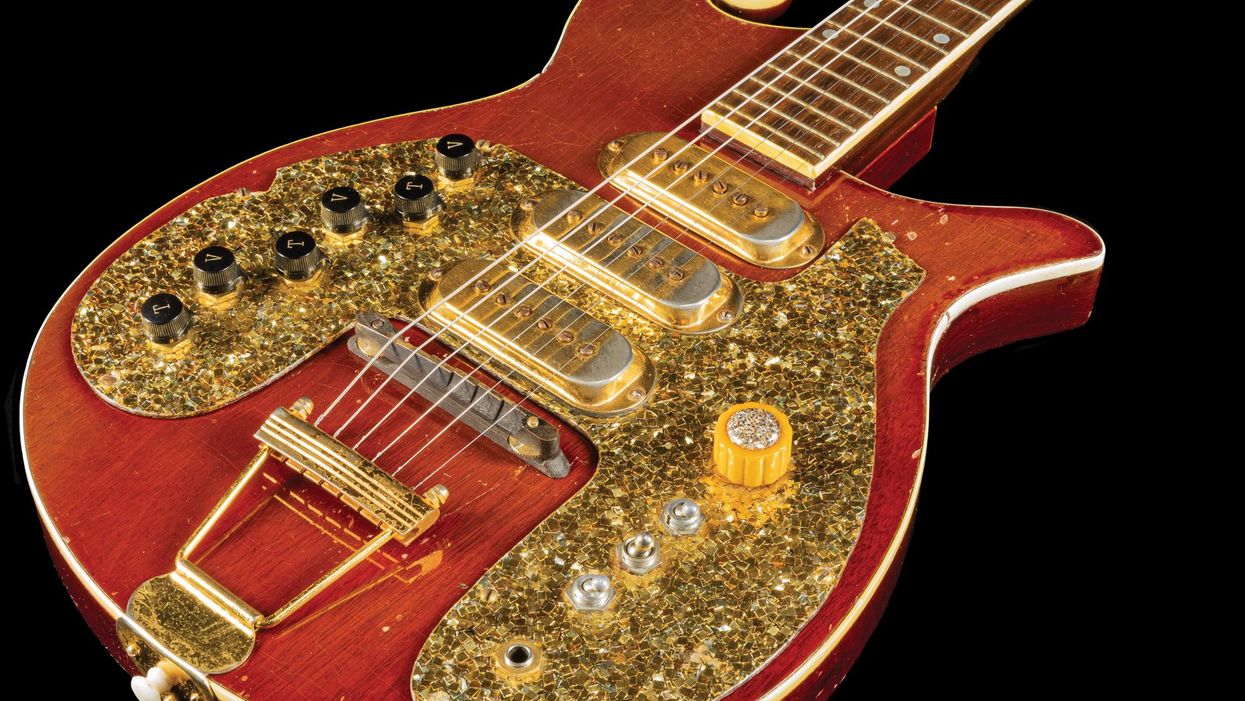

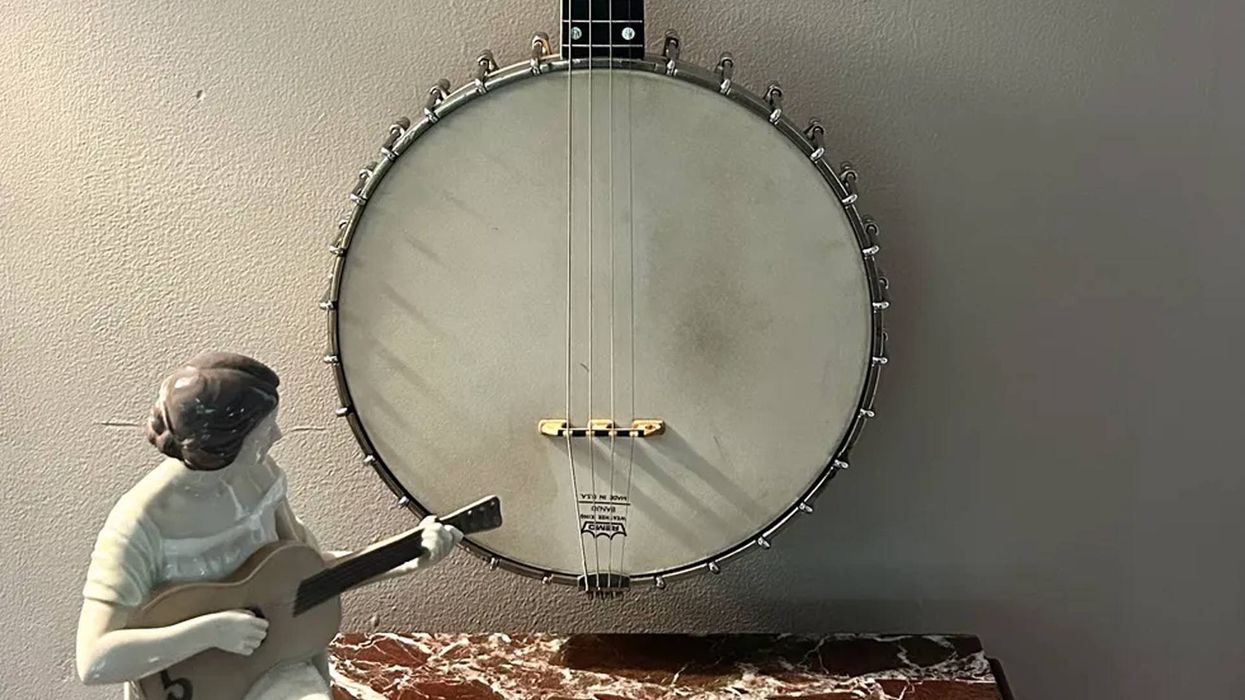
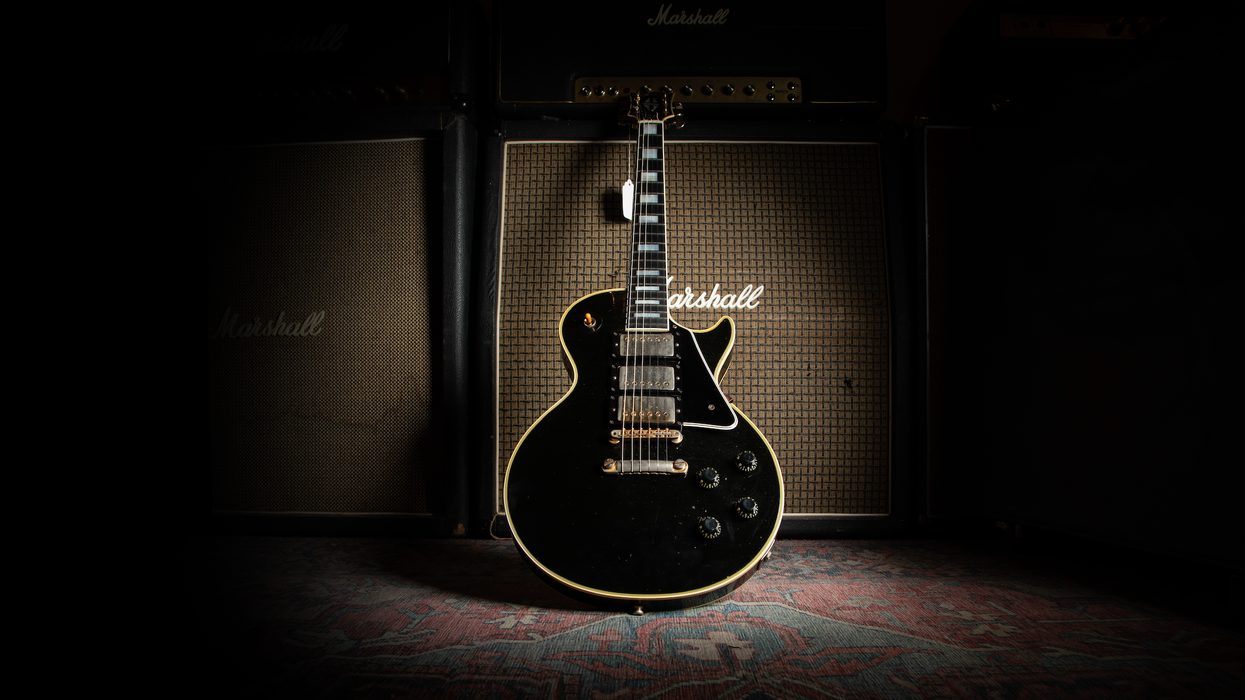
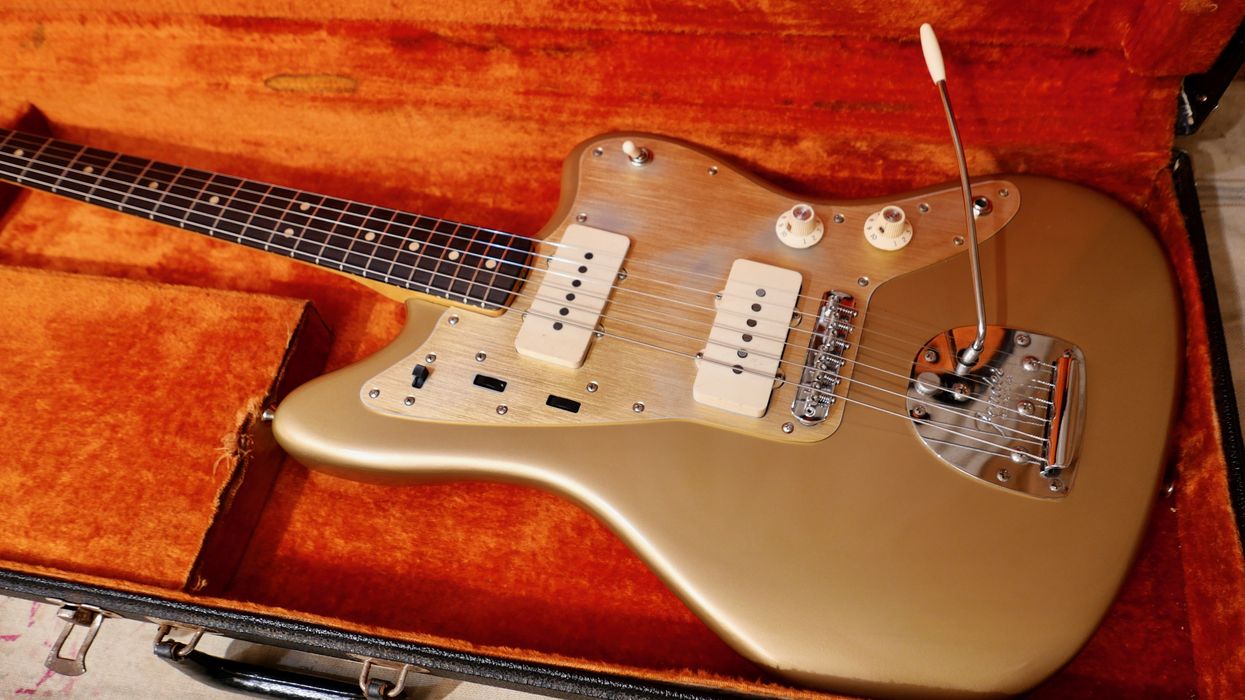
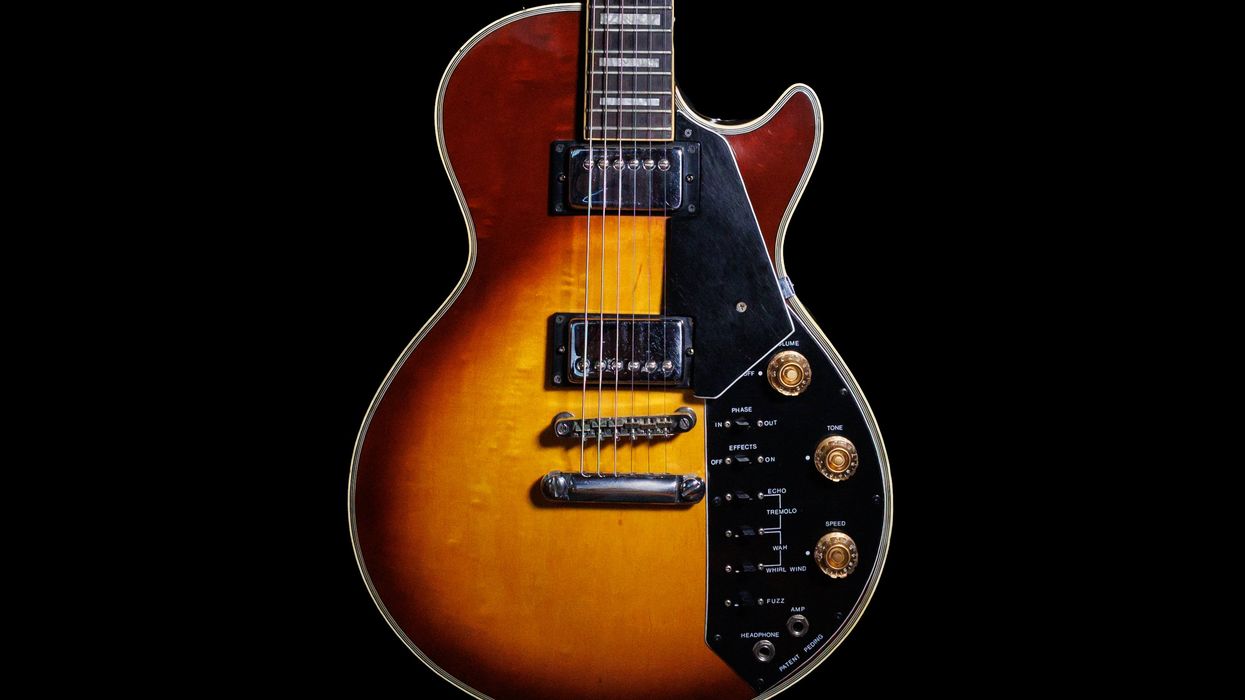

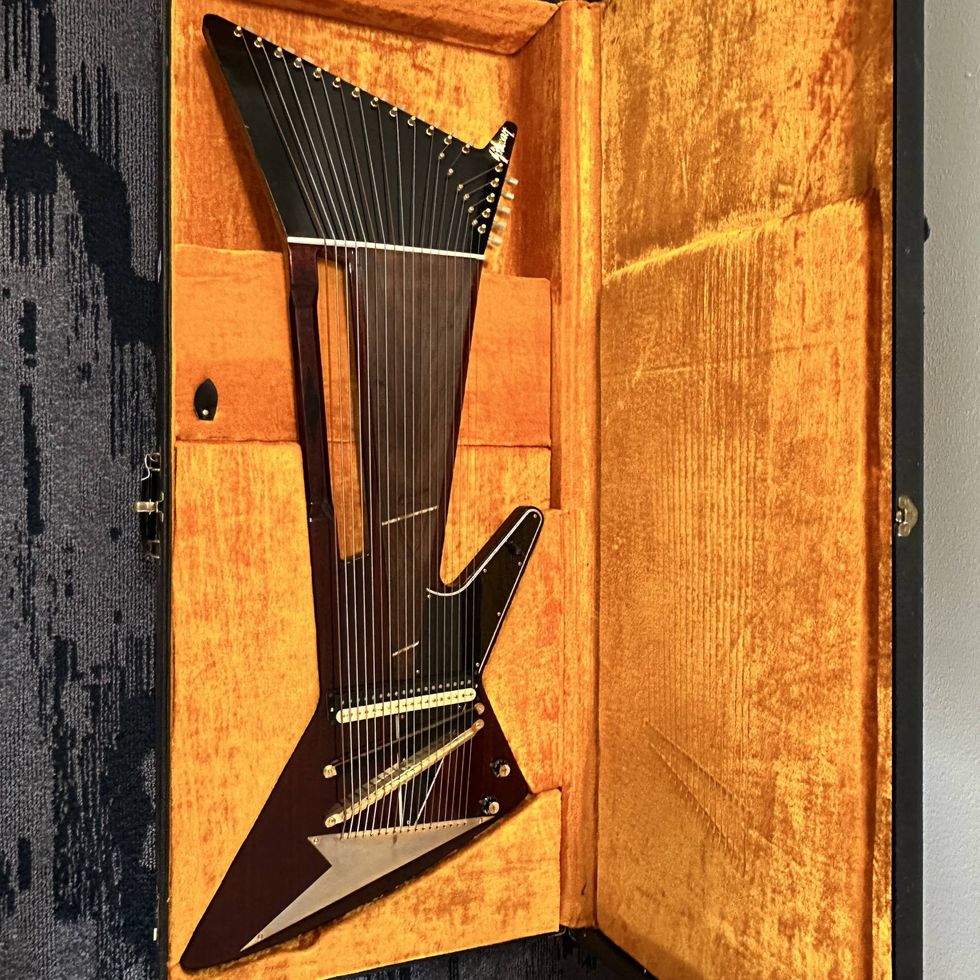


![Rig Rundown: Russian Circles’ Mike Sullivan [2025]](https://www.premierguitar.com/media-library/youtube.jpg?id=62303631&width=1245&height=700&quality=70&coordinates=0%2C0%2C0%2C0)




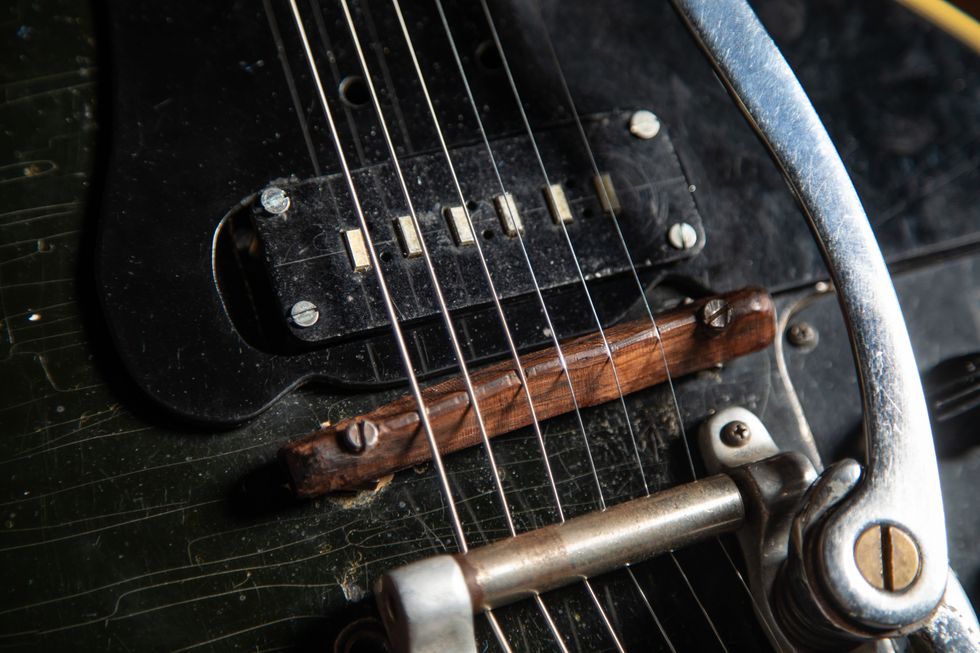
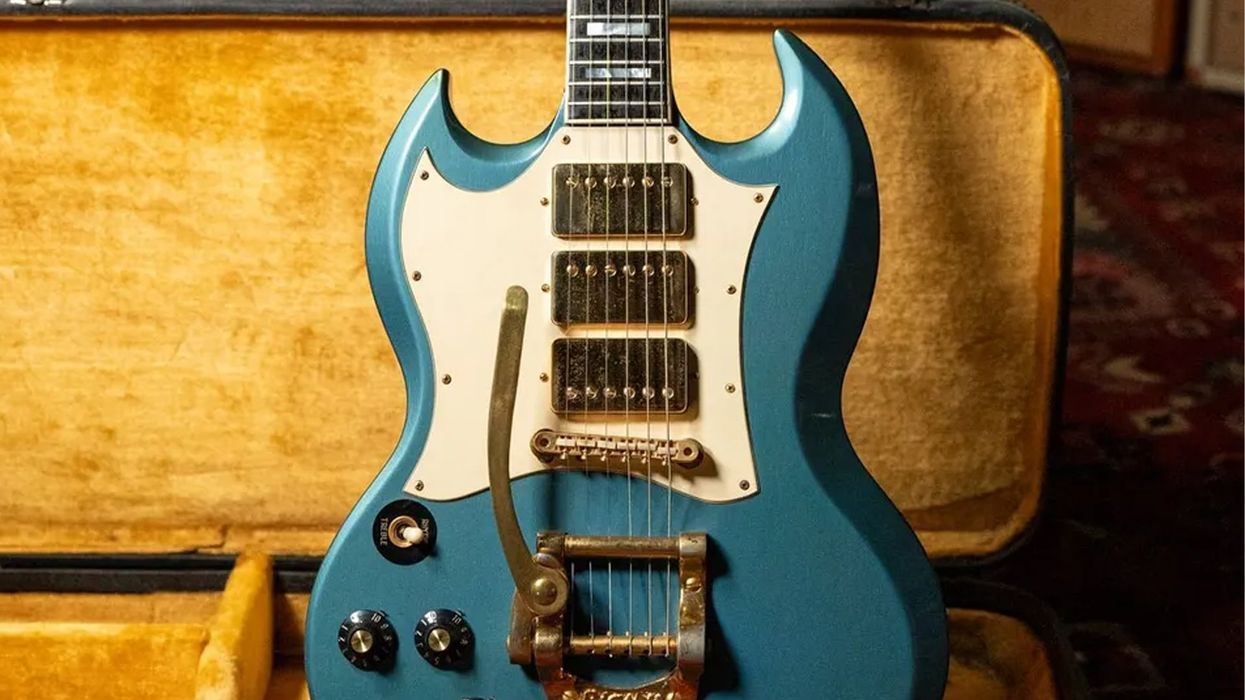

 Whether or not Jimi Hendrix actually played this guitar might come down to how lucky its buyer feels.Photo courtesy of Imperial Vintage Guitars Reverb Shop
Whether or not Jimi Hendrix actually played this guitar might come down to how lucky its buyer feels.Photo courtesy of Imperial Vintage Guitars Reverb Shop